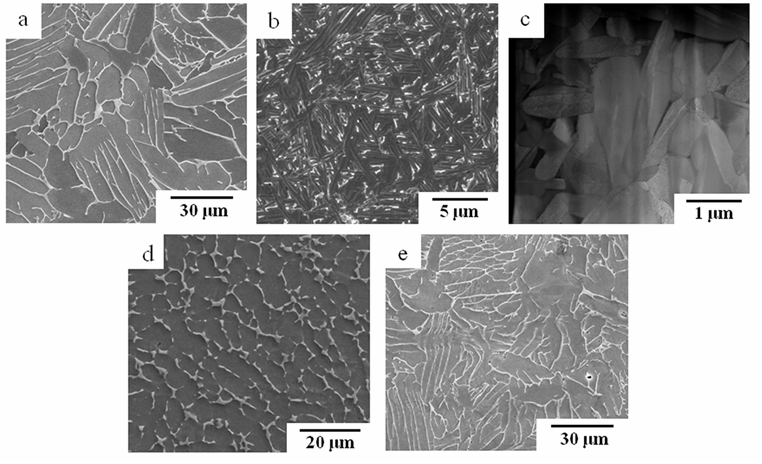Novel Ti-powder Sintering Process
Ultrafine Grain Ti Alloys
Development of Ultrafine Grain Ti Alloys
ADVANCED POWDER METALLURGY (P/M) TITANIUM
Over the past two years our group has pursued a project on a new approach for manufacturing components of titanium or titanium alloys through direct sintering of titanium hydride. A new sintering process has been discovered which can produce fine grain fully dense titanium alloys in an as-sintered state. We have also developed new techniques for near-net shape fabrication of titanium based on the cold isostatic press (CIP) process. Further, the group is collaborating with the Orthopedic Research Laboratory at the University of Utah to develop titanium based advanced implants for a range of medical applications that demand high strength, low mass and biocompatibility.
Titanium alloys are attractive for many applications due to their unique combination of high strength, low density, corrosion resistance, and biocompatibility. However, the cost of manufacturing titanium components is so high that the use of these materials in civilian industries and consumer markets is limited. Powder Metallurgy (PM) has been regarded as a viable and promising approach for reducing the cost of Ti fabrication because of the near-net-shape capability of PM processes. The microstructure of sintered PM Ti-6Al-4V, however, is usually rather coarse, and the coarse grain size is detrimental to ductility in tension and to fatigue properties. The as-sintered coarse microstructures can be refined only by post-sintering thermal mechanical working and heat treatments, which substantially increase the production cost of PM Ti parts.
Striving to maintain maximum performance while limiting cost, our research group has been investigating a novel process, namely, the hydrogen sintering and phase transformation (HSPT) process. This technique creates Ti materials with near full density and ultra fine grain sizes in an as-sintered state. The near porosity-free ultrafine microstructure is achieved by sintering under atmospheres with controlled hydrogen partial pressure, and then subjecting the material to a eutectoid transformation, and dehydrogenation at moderate temperatures. This approach provides a promising route for producing PM Ti materials with superior mechanical properties at low cost. Figure 1 compares the microstructures of Ti-6Al-4V produced by vacuum sintering, HSPT and typical wrought processes. The HSPT samples exhibit significantly finer grain sizes than the other processing methods (note the different scale markers). Table 1 compares the tensile properties of Ti-6Al-4V by vacuum sintering and HSPT with the ASTM standard for wrought materials, demonstrating significantly improved strength with comparable or improved ductility. The new HSPT process holds promise for producing high performance Ti alloys at reduced cost, thus expanding the potential applications and benefits to society of these valuable materials systems.
This technology is now funded by US Department of Energy, Advanced Manufacturing Office, Innovative Manufacturing Initiative program.

Fig.1 Microstructures produced by: a) vacuum sintering of TiH2 (SEM image), b) HSPT processing of TiH2 (SEM image), c) higher magnification of the HSPT process (STEM image), d) typical wrought process (SEM image) and, e) vacuum sintering of Ti metal powder (SEM image).
Table 1. Tensile properties of Ti-6Al-4V by vacuum sintering and HSPT.

Reference
- Fang, Z. Z., Sun, P. and Wang, H., Hydrogen Sintering of Titanium to Produce High Density Fine Grain Titanium Alloys. Adv. Eng. Mater., Vol. 14 (2012), pp. 383-387.Reference
